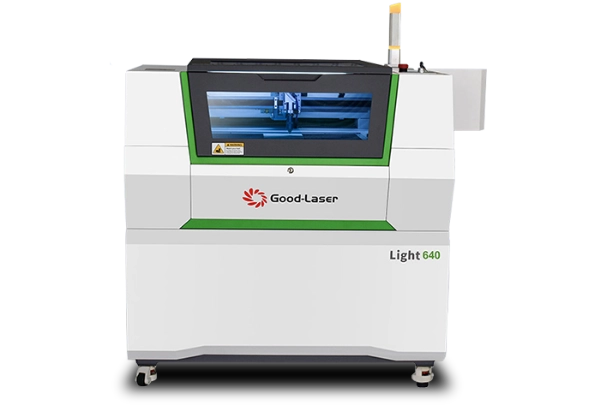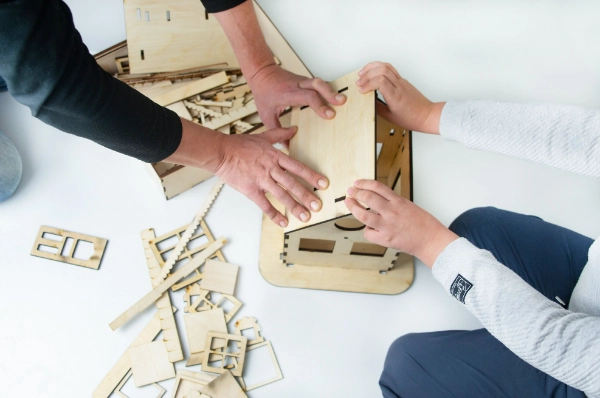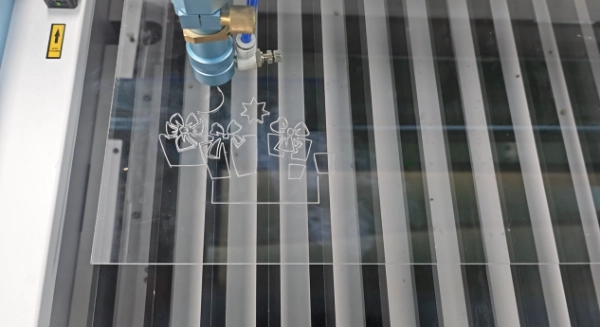The Significance of CO2 Desktop Laser Cutters in School Education
With the advent of digital fabrication tools in education, CO2 desktop laser cutters have emerged as a powerful resource for schools, opening new opportunities in creative learning, engineering, and science. These laser cutters use focused laser beams to cut, engrave, and shape materials with precision, making them ideal for educational settings where accuracy and safety are prioritized.
The accessibility of compact, user-friendly desktop models has made them suitable for school environments, empowering students to explore design, technology, and prototyping in ways that were previously limited to advanced manufacturing industries. In this blog post, Good-Laser will share the significance of CO2 desktop laser cutter in school education, covering their technical advantages, safety features, educational benefits, and potential to foster STEM (science, technology, engineering, and mathematics) skills.
1. Technical Advantages of CO2 Desktop Laser Cutters
A CO2 laser cutter operates by generating a powerful laser beam using a mixture of carbon dioxide and other gases. This beam is directed through a series of mirrors and lenses to focus on a specific point on the material, creating heat that vaporizes the material for precise cutting or engraving. These machines can cut through or engrave on various materials like acrylic, wood, fabric, and even certain metals, allowing for diverse applications.
Compared to traditional mechanical cutting tools, CO2 laser cutters provide several technical advantages:
- Precision and Speed: CO2 lasers operate with sub-millimeter accuracy, enabling intricate designs that might be challenging with manual tools. The speed can be adjusted depending on the material and project complexity, making it efficient for classroom use where multiple students may need access.
- Non-contact Processing: Since the laser cutter operates without direct contact, there is minimal wear on the equipment and less risk of material contamination, which is important for safe and reliable operation in a school environment.
- Versatility: The ability to work with a variety of materials means that a single laser cutter can be used across different classes and projects, from creating complex geometries in math class to engraving art designs or building mechanical prototypes in engineering.
2. Enhanced Safety Features in Desktop Models
Safety is paramount in educational settings, and desktop CO2 laser cutters designed for schools come equipped with features to ensure safe operation:
- Enclosed Design: Most CO2 laser cutters are housed in an enclosure that prevents students from being exposed to the laser beam, which could cause eye damage or burns.
- Ventilation and Filtration Systems: CO2 laser cutters emit fumes during cutting and engraving, especially when working with certain plastics or organic materials. Desktop models often have built-in exhaust systems with filters to manage fumes, keeping the air quality safe.
- Auto Shutoff and Interlock Systems: Many machines are equipped with safety interlocks that immediately shut down the laser when the enclosure is opened during operation, preventing accidental exposure to the beam.
- Intuitive Software and Controls: User-friendly software interfaces help guide students through design and operation, reducing the chance of errors. The ability to control speed, power, and positioning accurately ensures safe and predictable outcomes.
These safety features make CO2 desktop laser cutters viable for a supervised classroom setting, where students can learn hands-on without compromising safety.

3. Educational Benefits and Curriculum Integration
CO2 laser cutters align with current educational trends, particularly those emphasizing experiential learning and hands-on problem-solving. The devices can enhance various subjects by providing students with tangible results from their theoretical studies. Here’s how CO2 laser cutters integrate with different curricula:
- STEM (Science, Technology, Engineering, and Mathematics): In STEM, students learn the importance of precision and measurement, explore the properties of materials, and engage in real-world problem-solving. Laser cutters provide an avenue for students to design, prototype, and test ideas, offering insights into engineering and design concepts that would otherwise be abstract.
- Art and Design: For art students, CO2 laser cutters open new possibilities in creating intricate patterns, engraving on mixed materials, and developing 3D designs. By blending technology with artistic expression, students learn how digital tools can extend creative boundaries.
- Mathematics: Mathematical concepts such as geometry, scaling, and symmetry can be explored through practical design projects. Creating patterns and shapes with a laser cutter helps students understand abstract math concepts in a concrete way.
- History and Social Studies: Laser cutters can even support history and social studies projects, such as creating accurate topographic maps, historical replicas, or models of artifacts. This hands-on approach enables students to develop a deeper connection to historical concepts.
4. Fostering Skills and Careers in STEM and Design
One of the greatest values of CO2 desktop laser cutters in schools is their role in career readiness. By familiarizing students with digital fabrication tools, schools can help bridge the gap between educational experiences and the requirements of modern careers in STEM and design fields.
- Encouraging Design Thinking and Innovation: Laser cutters enable students to practice the design thinking process, which involves defining a problem, ideating solutions, prototyping, and testing. This iterative process is central to innovation and is valuable in fields like engineering, architecture, and product design.
- Skill Development: Operating a laser cutter involves knowledge of design software, material science, project management, and technical troubleshooting. These are foundational skills in careers like engineering, industrial design, and digital fabrication, providing students with early exposure to the tools they might use professionally.
- Entrepreneurship Opportunities: Some schools have even started to integrate entrepreneurship projects with laser cutters, allowing students to design and create products they can market and sell, from custom keychains to personalized gifts. This offers insights into product development, marketing, and business management.
5. Sustainability and Innovation in Education
CO2 laser cutters encourage sustainable practices by promoting efficient material usage and reducing waste. Schools can incorporate lessons on sustainability, exploring how efficient cutting techniques and material choice affect environmental impact. By learning how to design for minimal waste, students can adopt responsible fabrication practices early on.
Conclusion
The CO2 desktop laser cutter is more than just a tool for cutting and engraving—it’s an educational asset that aligns with diverse subjects, fosters innovation, and provides practical skills that prepare students for future careers. As schools increasingly adopt project-based learning models, CO2 laser cutters provide a unique hands-on experience, blending technology with creativity and engineering. With the right safety measures and guidance, these machines allow students to move from conceptual learning to real-world application, igniting curiosity and confidence in their abilities.




